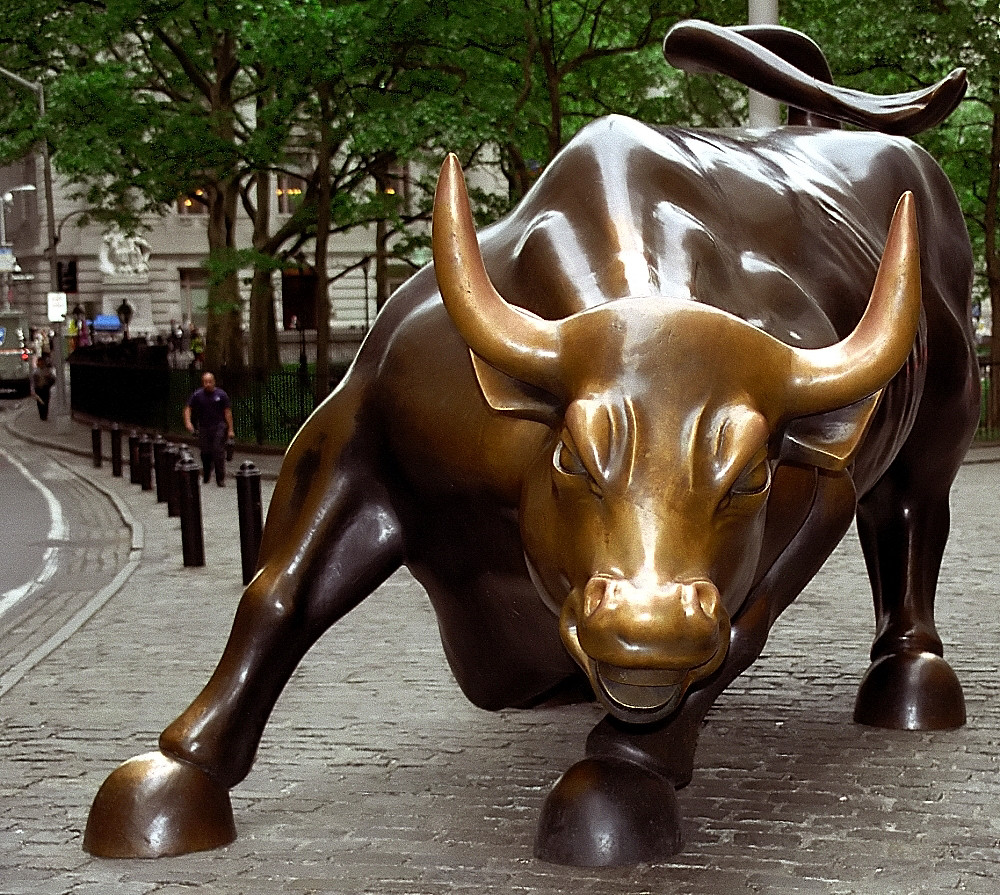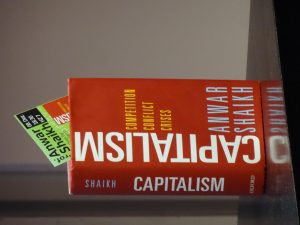Keynes Against Capitalism (Review by Nick Johnson)
✑ NICK JOHNSON ` ╱ ± 6 minutes

Keynes did not wish to merely save capitalism ‘from itself’ but to replace it with ‘Liberal Socialism’. That is the controversial claim made in a new book by the distinguished radical economist James Crotty. But Liberal Socialism, as Crotty sees it, may remain a little idealistic.

I found myself questioning whether Keynes’ (Crotty’s?) Liberal Socialism, for all its admirable socially transformative aims, would be both feasible and sustainable.
Keynes did not wish to merely save capitalism ‘from itself’ but to replace it with ‘Liberal Socialism’. That is the controversial claim made in a new book by the distinguished radical economist James Crotty. But Liberal Socialism, as Crotty sees it, may remain a little idealistic.
From: The Political Economy of Development, June 5, 2019 ╱ About the author
Nick Johnson has an MSc in development economics from SOAS, University of London, works for a charity, is passionately interested in economics and how it can be used to promote sustainable human progress. His personal blog: The Political Economy of Development. On twitter@nickj_econ.
John Maynard Keynes did not wish to merely save capitalism ‘from itself’ but to replace it with ‘Liberal Socialism’. That is the controversial claim made in a new book by the distinguished radical economist James Crotty, whose work ‘attempts to integrate the complementary analytical strengths of the Marxian and Keynesian traditions’.
The book, Keynes Against Capitalism, subtitled His Economic Case for Liberal Socialism, draws heavily on textual evidence found in the collected works of Keynes himself, from the 1920s through to the end of his life in 1946. This is both its strength and its weakness.
Without wishing to get into debate over semantics, one could find oneself agreeing with much of the argument ie that Keynes did in fact wish to replace capitalism with a radically different system called Liberal Socialism, but to say, in some ways, so what? The book is a fine scholarly read, but I found myself questioning whether Keynes’ (Crotty’s?) Liberal Socialism, for all its admirable socially transformative aims, would be both feasible and sustainable.
According to the argument of the book, and for Keynes, the world economy of the 1920s and 1930s was prone to what has in today’s world been called by Lawrence Summers ‘secular stagnation’. For Keynes, the prosperity of 19th century Britain had been driven by free trade, imperialism, high savings resulting from a high inequality of income and wealth and channeled into investment at home and abroad, and rapid population growth and technological change. This era had come to an end and been replaced by one of secular stagnation, or a tendency towards sluggish economic growth and high unemployment, which required a radical change in policy to escape it.
Keynes’ Liberal Socialism would need a commitment from the state to ensure that a high percentage of large-scale capital investment should be in the hands of public or semi-public corporations, rather than be left mostly to the private sector. It also needed managed international trade, controls on international capital flows, industrial and regional policies, and a larger role for state planning and investment as the key to achieving and sustaining full employment over the long term.
There was also a need, according to Keynes, to drive the rate of interest towards zero in order to achieve the ‘euthanasia of the rentier’. Together with sustained full employment, this would result in a dramatic shift of the distribution of income, wealth and power away from the financial sector and other elites and towards the working class. It would also help to overcome what Keynes saw as the problem of a declining general rate of profit in the economy, which was dampening the spirits of enterprise.
Keynes was highly critical of the ‘insane’ operation of financial markets, particularly in the US stock market of his day, but also those in the UK. When speculation dominated enterprise, rather than the other way around, investment, economic growth and employment would suffer. He proposed that the financial system be predominantly national, aided by the aforementioned capital controls. This would allow the monetary authorities to keep the rate of interest at a low enough level to help achieve full employment.
Crotty maintains that the key to Keynes’ arguments was that the state needed to guide, implement and drive investment, since, left predominantly to private initiative, its unstable and unreliable nature over the business cycle would be inevitable, producing a tendency towards sluggish growth and insufficient levels of employment.
Once full employment had been achieved, policies to raise the marginal propensity to consume and lower the propensity to save, such as the progressive redistribution of income and wealth, would also be needed.
Interestingly, Keynes criticised not only laissez-faire capitalism, as the system of a bygone age, but also the state socialism favoured by the Labour Party of his time, which called for widespread collective ownership in order to implement state planning. While state planning was part of Keynes’ Liberal Socialism, he did not see state ownership as key, instead favouring a more experimental approach to discover what degree of public, semi-public or private control would prove most effective in achieving a sufficient level of investment.
Another important part of Keynes’ argument that Crotty highlights is his opposition to wage cuts as a solution to unemployment. He admitted that increasing trade union power in Britain had made wages more ‘rigid’, but that undoing this would be ineffective, would violate the norms of social justice, and could increase uncertainty due to the resulting instability of prices which could well reduce business incentives to invest.
Wage cuts and a generalised deflation would also tend to weaken the economy, increasing the debt burden and potentially the level of unemployment, while fueling social unrest. Wage cuts were missing the point: it was insufficient aggregate demand and investment which was the cause of unemployment.
This Liberal Socialism was certainly more all-encompassing than the mainstream Keynesian adherence to ‘fine-tuning’ using fiscal and monetary policies. In addition to this, the post-war period prior to the rise of neoliberalism, termed by many the Golden Age of capitalism, did see widespread capital controls, fixed but adjustable international exchange rates, and varying degrees of industrial and incomes policies. But the rapid growth with generally low unemployment, rising wages and relatively low inequality could only be sustained for 25 years or so, before the Bretton Woods system broke down amidst rising inflation and unemployment (stagflation) and falling productivity growth across the capitalist world.
Another question which Crotty’s book begs is whether the rentier class would accept, in the words of Keynes, their euthanasia. Once more, history tells us that, having achieved heightened power and status in society, they would not, at least not for long. A huge increase in the role of the state in society and in the strength of labour vis-à-vis capital would also prove unpalatable to many. Major economic and financial crises or conflict might produce a dramatic shift to the left politically, and greater support for much more progressive policies. But even this is not guaranteed with regard to those actually wielding political power, as the decade since the Great Recession has so far proved.
Thus I applaud Crotty for a work of significant scholarship, interest and even inspiration, but suggest that Keynes’ Liberal Socialism, as he sees it, may remain a little idealistic.
The book, Keynes Against Capitalism, subtitled His Economic Case for Liberal Socialism, draws heavily on textual evidence found in the collected works of Keynes himself, from the 1920s through to the end of his life in 1946. This is both its strength and its weakness.
Without wishing to get into debate over semantics, one could find oneself agreeing with much of the argument ie that Keynes did in fact wish to replace capitalism with a radically different system called Liberal Socialism, but to say, in some ways, so what? The book is a fine scholarly read, but I found myself questioning whether Keynes’ (Crotty’s?) Liberal Socialism, for all its admirable socially transformative aims, would be both feasible and sustainable.
 |
| James Crotty (personal page at PERI), Keynes Against Capitalism: His Economic Case for Liberal Socialism, Routledge, 2019. |
According to the argument of the book, and for Keynes, the world economy of the 1920s and 1930s was prone to what has in today’s world been called by Lawrence Summers ‘secular stagnation’. For Keynes, the prosperity of 19th century Britain had been driven by free trade, imperialism, high savings resulting from a high inequality of income and wealth and channeled into investment at home and abroad, and rapid population growth and technological change. This era had come to an end and been replaced by one of secular stagnation, or a tendency towards sluggish economic growth and high unemployment, which required a radical change in policy to escape it.
Keynes’ Liberal Socialism would need a commitment from the state to ensure that a high percentage of large-scale capital investment should be in the hands of public or semi-public corporations, rather than be left mostly to the private sector. It also needed managed international trade, controls on international capital flows, industrial and regional policies, and a larger role for state planning and investment as the key to achieving and sustaining full employment over the long term.
| Michael Roberts' review of Crotty's Keynes Against Capitalism. And Michael Roberts' previous two articles discussing how revolutionary Keynes was in terms of his economics (part 1) and his internationalism (part 2). |
|---|
There was also a need, according to Keynes, to drive the rate of interest towards zero in order to achieve the ‘euthanasia of the rentier’. Together with sustained full employment, this would result in a dramatic shift of the distribution of income, wealth and power away from the financial sector and other elites and towards the working class. It would also help to overcome what Keynes saw as the problem of a declining general rate of profit in the economy, which was dampening the spirits of enterprise.
Keynes was highly critical of the ‘insane’ operation of financial markets, particularly in the US stock market of his day, but also those in the UK. When speculation dominated enterprise, rather than the other way around, investment, economic growth and employment would suffer. He proposed that the financial system be predominantly national, aided by the aforementioned capital controls. This would allow the monetary authorities to keep the rate of interest at a low enough level to help achieve full employment.
Crotty maintains that the key to Keynes’ arguments was that the state needed to guide, implement and drive investment, since, left predominantly to private initiative, its unstable and unreliable nature over the business cycle would be inevitable, producing a tendency towards sluggish growth and insufficient levels of employment.
Once full employment had been achieved, policies to raise the marginal propensity to consume and lower the propensity to save, such as the progressive redistribution of income and wealth, would also be needed.
Interestingly, Keynes criticised not only laissez-faire capitalism, as the system of a bygone age, but also the state socialism favoured by the Labour Party of his time, which called for widespread collective ownership in order to implement state planning. While state planning was part of Keynes’ Liberal Socialism, he did not see state ownership as key, instead favouring a more experimental approach to discover what degree of public, semi-public or private control would prove most effective in achieving a sufficient level of investment.
Another important part of Keynes’ argument that Crotty highlights is his opposition to wage cuts as a solution to unemployment. He admitted that increasing trade union power in Britain had made wages more ‘rigid’, but that undoing this would be ineffective, would violate the norms of social justice, and could increase uncertainty due to the resulting instability of prices which could well reduce business incentives to invest.
Wage cuts and a generalised deflation would also tend to weaken the economy, increasing the debt burden and potentially the level of unemployment, while fueling social unrest. Wage cuts were missing the point: it was insufficient aggregate demand and investment which was the cause of unemployment.
This Liberal Socialism was certainly more all-encompassing than the mainstream Keynesian adherence to ‘fine-tuning’ using fiscal and monetary policies. In addition to this, the post-war period prior to the rise of neoliberalism, termed by many the Golden Age of capitalism, did see widespread capital controls, fixed but adjustable international exchange rates, and varying degrees of industrial and incomes policies. But the rapid growth with generally low unemployment, rising wages and relatively low inequality could only be sustained for 25 years or so, before the Bretton Woods system broke down amidst rising inflation and unemployment (stagflation) and falling productivity growth across the capitalist world.
This Liberal Socialism was certainly more all-encompassing than the mainstream Keynesian adherence to ‘fine-tuning’ using fiscal and monetary policies.History therefore tells us that full employment is achievable, but probably unsustainable over long periods, especially when accompanied by rising wages for the majority and declining inequality. The Golden Age lasted for 25 years, and was followed by long periods of significantly higher unemployment in most capitalist countries. When the latter subsequently fell, this was in many cases in countries whose governments had acted to weaken trade union power and workers’ rights and protections more generally so that falling unemployment was associated with rising inequality and job insecurity, and stagnant wages, particularly at the lower end of the distribution.
Another question which Crotty’s book begs is whether the rentier class would accept, in the words of Keynes, their euthanasia. Once more, history tells us that, having achieved heightened power and status in society, they would not, at least not for long. A huge increase in the role of the state in society and in the strength of labour vis-à-vis capital would also prove unpalatable to many. Major economic and financial crises or conflict might produce a dramatic shift to the left politically, and greater support for much more progressive policies. But even this is not guaranteed with regard to those actually wielding political power, as the decade since the Great Recession has so far proved.
Thus I applaud Crotty for a work of significant scholarship, interest and even inspiration, but suggest that Keynes’ Liberal Socialism, as he sees it, may remain a little idealistic.
| Top image: John Maynard Keynes, 1912 (adapted). From: Wikimedia |
|---|























Comments
Post a Comment
Your thoughts...